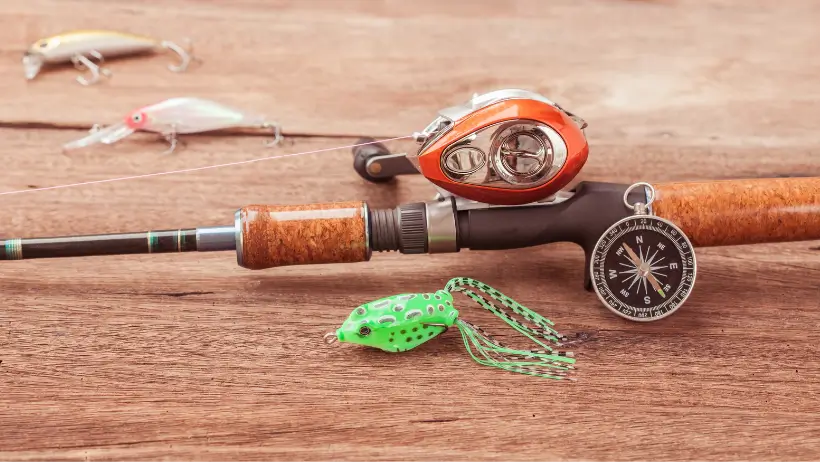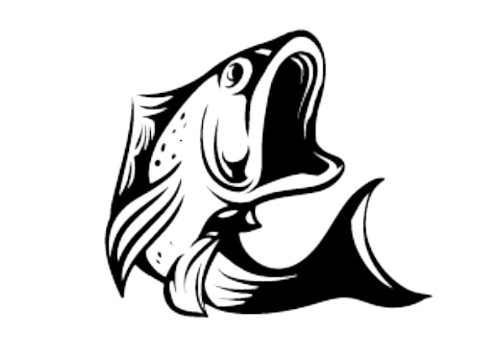How To String A BAITCASTER (Tried And True Method)

A Baitcaster is a type of fishing reel that is attached to the fishing rod above the handle. The line is wound around a spool that is free to rotate on a bearing.
The Baitcaster gets its name from the fact that it is often used to cast bait, or lures, into the water.
The Baitcaster is a versatile reel that can be used for a variety of different fishing techniques. It is a popular choice for bass fishing, as well as for fishing in heavy cover. Baitcasting reels are also commonly used for jigging and trolling.
How To String A Baitcaster Properly
If you are new to baitcasting, the process of stringing a baitcasting reel can seem a bit daunting. But, with a little practice, you will be able to get the hang of it in no time.
In this article, we will walk you through the process of how to string a baitcaster with step by step guide.
Before you start to string a baitcaster, there are a few things you will need:
- A baitcasting reel
- A fishing rod
- Fishing line
- Scissors
- A pair of pliers
Step 1: Attach Your Baitcaster With Fishing Rod
Start by attaching your baitcasting reel to your fishing rod. Make sure that the reel is securely in place and that the handle is in the correct position.
Step 2: Thread The Line
Next, you will need to thread the fishing line through the guides on the rod. Start at the tip of the rod and work your way down.
Step 3: Tie The Line to The Spool
Once the line is through the guides, you will need to tie the line to the spool of the reel. To do this, you will need to make a loop in the line and tie it to the spool with a double knot.
Step 4: Fill The Spool With Line
Now, you will need to fill the spool with line. To do this, hold the spool with one hand and use the other hand to wind the line around the spool. Be sure to leave enough line so that you can make a loop at the end.
Step 5: Tie The End of The Line
Once the spool is full, you will need to tie the end of the line to the spool with a double knot.
Step 6: Cast The Line
To cast the line, you will need to hold the rod in one hand and the reel in the other. Then, you will need to push the spool release button and let the line out.
Step 7: Reel in The Line
To reel in the line, you will need to hold the rod in one hand and the reel in the other. Then, you will need to turn the handle on the reel.
That’s it! Now you know the basics of how to string a baitcaster. With a little practice, you will be an expert in no time.
How do You Use a Baitcaster For The First Time?

Using a Baitcaster for the first time can be tricky, but once you get the hang of it, it’s a great way to fish. Here are some tips to get you started:
- Start with lighter lures. Heavier lures can be difficult to control and may cause the baitcaster to backlash.
- Practice casting in an open area. Avoid trees, power lines, and other obstacles.
- Use your thumb to control the spool. This will help you avoid backlash and keep the lure from flying off the spool.
- Be patient. It takes practice to master the baitcaster, but once you get the hang of it, you’ll be able to cast like a pro!
Must read about how to cast a baitcaster accurately.
How to String a Baitcaster with Braided Line
There are a few things to consider when stringing a baitcaster with a braided line. First, make sure that the spool of your baitcaster is capable of holding enough braided lines.
Most baitcasters have a capacity of around 150 yards, so you’ll want to make sure that your spool can handle that much line.
Next, it’s important to choose the right type of braided line for your baitcaster. A stiffer braided line will work better than a flexible line, as it will be less likely to tangle when you’re casting.
You’ll also want to make sure that the diameter of the braided line is appropriate for your baitcaster; if the line is too thick or too thin, it may not feed correctly through the spool.
Once you’ve selected the right type and diameter of the braided line, it’s time to tie it onto your reel. There are a few different ways to do this, but one of the most common methods is to use an arbor knot.
To do this, thread one end of the line through the eyelet on the reel and tie a simple knot around the other end of the line. Then, take the two ends of the line and tie them together in an arbor knot.
Make sure that the knot is tight against the eyelet on the reel, and then you’re ready to start fishing!
Why Does Baitcaster Not Cast Far?
There are a few reasons why your baitcaster may not be cast as far as you would like. One reason could be that the spool is not full. A full spool will cast further than a spool that is not full.
Another reason could be that the drag is set too tight. The drag should be set so that it is tight enough to prevent the fish from taking line, but not so tight that it prevents the lure from being cast.
Finally, the type of line you are using can also affect how far your baitcaster will cast. A heavier line will not cast as far as a lighter line.
How Can You Improve Your Casting Distance?
There are a few things you can do to improve your casting distance:
- Use a heavier weight lure – this will help you cast further because it will provide more momentum.
- Use a longer rod – this will give you more leverage and also help with the momentum of the cast.
- Use a reel with a higher gear ratio – this will help you retrieve the line faster and also generate more power on the cast.
- Practice your casting – the more you do it, the better you’ll become at it and the further you’ll be able to cast.
FAQs:
How do you string a baitcasting reel?
There are a few different ways to string a baitcasting reel, but the most common method is to use a piece of fishing line and tie it to the spool of the reel. Then, you will need to thread the line through the guides on the rod and finally tie it to the lure or bait.
Do you need backing on a Baitcaster?
Backing is not necessary on a baitcaster, but it can be helpful in some situations. If you are fishing in deep water or using a heavy lure, backing can help prevent your line from being pulled out of the reel. The backing can also be helpful if you are fishing in a strong current or wind.
Should you soak mono before spooling?
Yes, you should soak mono before spooling. This will help prevent the line from tangling and will make it easier to work with.
Can you tie the braid directly to the spool?
Yes, you can tie the braid directly to the spool. This is a common fishing knot that is used to attach the braid to the spool.
How do you keep the Braided fishing line from slipping?
There are a few ways to keep the braided fishing line from slipping. You can use a rubber band or tape to hold the line in place, or you can tie the line to a secure object.
Does a longer rod cast further?
It depends on several factors, including the type of rod, the type of line, the weight of the lure, and the skill of the angler. In general, however, a longer rod will be able to cast further than a shorter rod.
Final Verdict
After reading this blog, you should now know how to string a Baitcaster. This is a great skill to have if you enjoy fishing, as it will allow you to change your bait quickly and easily. With a little practice, you should be able to string a Baitcaster like a pro in no time.
